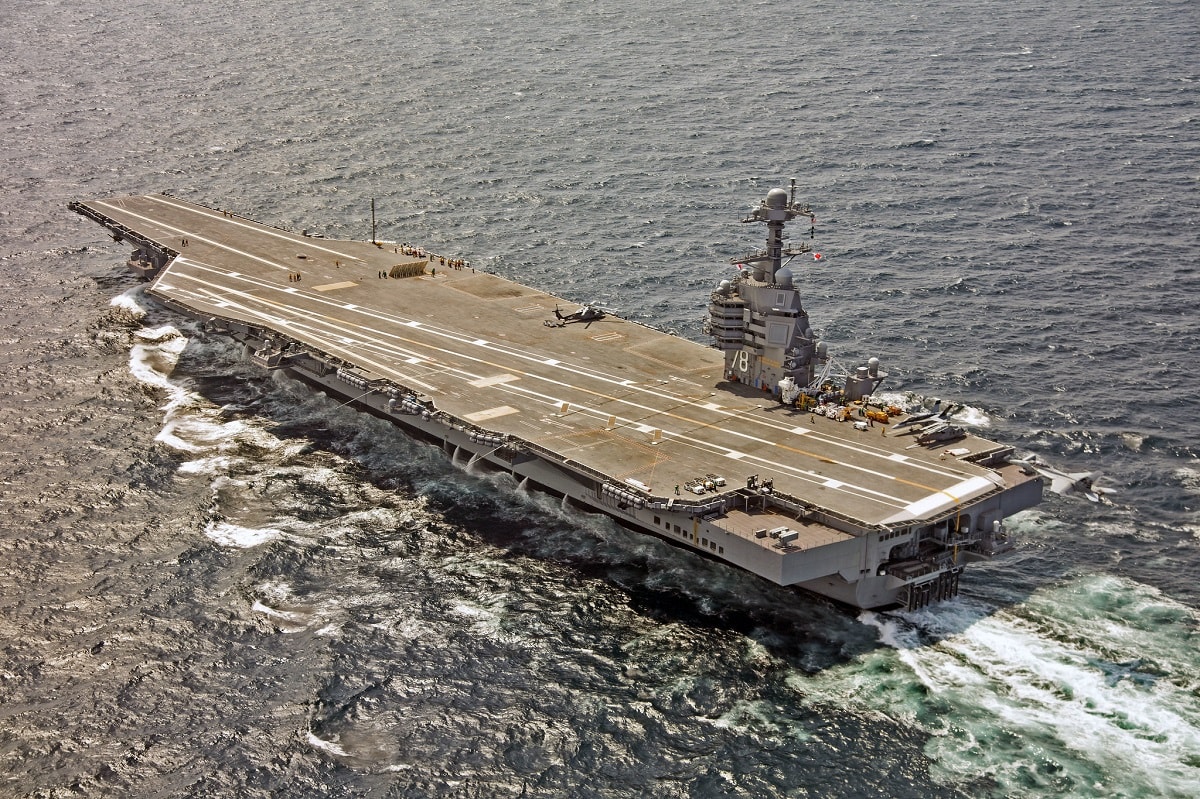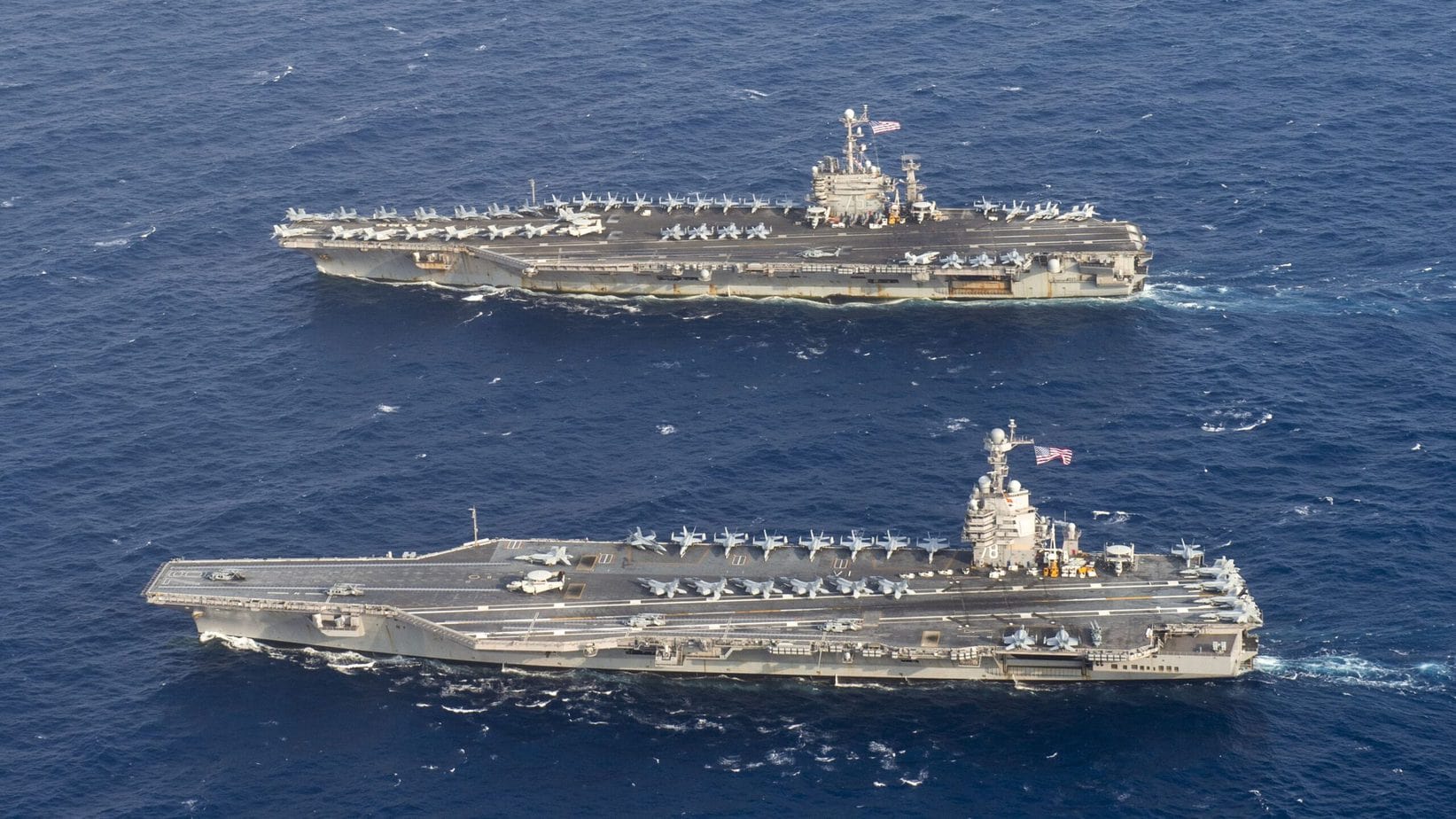During the Second World War, American industry produced the most numerous of its class of capital ships, the Essex-class aircraft carrier. A total of twenty-four of a planned thirty-two were built, and fourteen of the warships of the class engaged in combat operations, while no Essex-class carrier was lost to enemy action even though several sustained crippling damage.
In addition, a staggering 122 escort carriers were also built in six different classes during the war. Most of those “baby flattops” were built on merchant or tanker hulls, while some were even built from the keel up as actual carriers.
Fast forward to today.
The USS Gerald R. Ford (CVN-78) may be the world’s largest aircraft carrier and the largest warship ever constructed in terms of displacement, but it is also twenty-seven percent over its original budget and years behind schedule.
Maybe bigger isn’t better.
Gerald R. Ford: Why So Many Problems?
Part of the problem is that the lead ship of a new and more advanced class of aircraft carrier was intended to boost the Navy’s striking power, but as The Daily Press reported it began on its “fast track” two decades ago but instead resulted in hundreds of millions of dollars in cost overruns to address unexpected problems. Workers at Newport News Shipbuilding even had to “redo finished parts of the 1,092-foot long carrier” to address ongoing issues.
“The Ford’s long path toward a first deployment, now slated for next year, has sparked years of criticism about the way the Navy acquires ships — and how it sells the need for multibillion-dollar budgets to Congress. The Navy told Congress in 2007 it would cost $10.49 billion. It actually cost $13.316 billion,” The Daily Press added.
New Class, New Problems
A lot of the issues have had to do with the fact that this is the first new class of carrier designed in more than three decades. The new Ford-class carriers, which will replace the Navy’s aging carriers on a one-for-one basis, have a hull similar to the Nimitz-class – meant to speed the development and production – but have introduced new technologies including an Electromagnetic Aircraft Launch Systems (EMALS). Other advanced features were meant to improve efficiency and reduce operating costs.
In theory, Gerald R. Ford can reportedly launch and recover thirty-three percent more aircraft in a 12-hour period, and while slightly larger than her predecessor class of carrier, she can operate with seventeen percent fewer sailors.
Yet, it has been anything but smooth sailing in getting the ship ready for her first deployment. There has been everything from engine problems to issues with the EMALS, as well as quirks with the weapons elevators to the toilets clogging. A laundry list of fixes has been required, all of which has cost money and delayed the progress.
The total cost of the ship – and the fact that there is the hypersonic “carrier killer” weapons in development – has only further raised questions as to whether the U.S. Navy needs such a massive warship when multiple smaller carriers could do the job.

ATLANTIC OCEAN (July 28, 2017) An F/A-18F Super Hornet assigned to Air Test and Evaluation Squadron (VX) 23 approaches the aircraft carrier USS Gerald R. Ford (CVN 78) for an arrested landing. The aircraft carrier is underway conducting test and evaluation operations.(U.S. Navy photo by Erik Hildebrandt/Released) 170728-N-UZ648-161
However, the Naval Seas Systems Command stands by its carrier, and said that Ford “is a weapons system equipped with state of the art technology that is functioning as designed and is set up to provide a return on investment measured in billions of dollars across 5 decades.”
At this point, the Navy is so far in that it simply isn’t possible to change course.
Peter Suciu is a Michigan-based writer who has contributed to more than four dozen magazines, newspapers and websites. He regularly writes about military small arms, and is the author of several books on military headgear including A Gallery of Military Headdress, which is available on Amazon.com.

